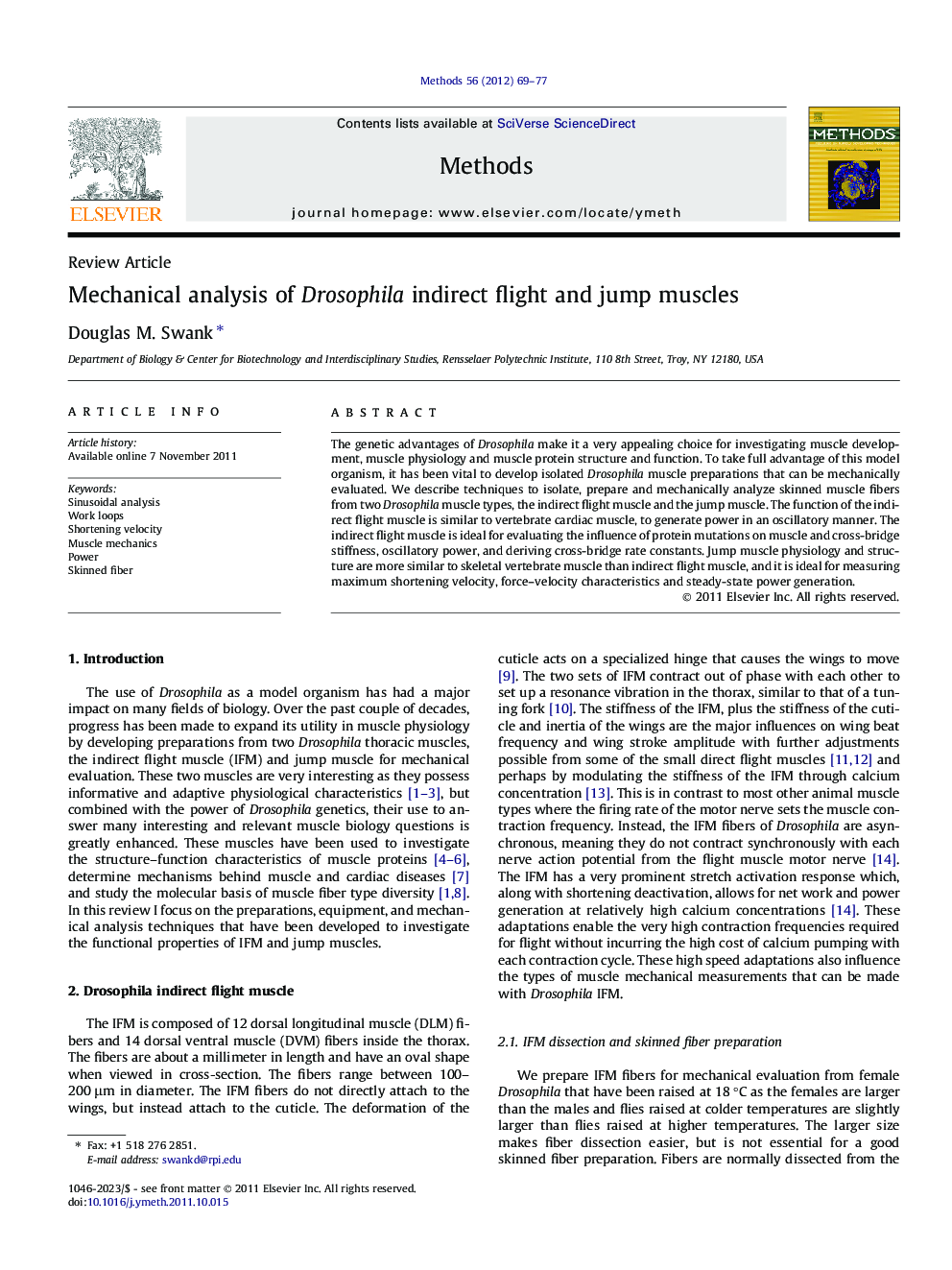| Article ID | Journal | Published Year | Pages | File Type |
|---|---|---|---|---|
| 1993788 | Methods | 2012 | 9 Pages |
The genetic advantages of Drosophila make it a very appealing choice for investigating muscle development, muscle physiology and muscle protein structure and function. To take full advantage of this model organism, it has been vital to develop isolated Drosophila muscle preparations that can be mechanically evaluated. We describe techniques to isolate, prepare and mechanically analyze skinned muscle fibers from two Drosophila muscle types, the indirect flight muscle and the jump muscle. The function of the indirect flight muscle is similar to vertebrate cardiac muscle, to generate power in an oscillatory manner. The indirect flight muscle is ideal for evaluating the influence of protein mutations on muscle and cross-bridge stiffness, oscillatory power, and deriving cross-bridge rate constants. Jump muscle physiology and structure are more similar to skeletal vertebrate muscle than indirect flight muscle, and it is ideal for measuring maximum shortening velocity, force–velocity characteristics and steady-state power generation.
